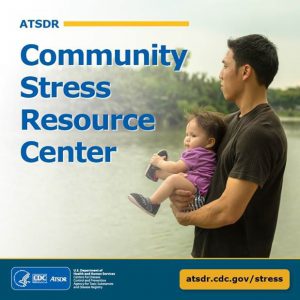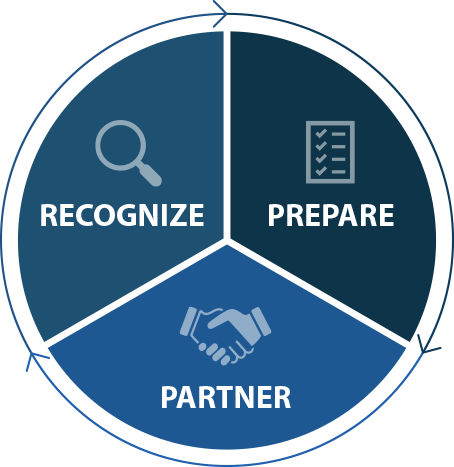Introducing ATSDR’s Community Stress Resource Center
Posted on by
Life in a community experiencing long-term environmental contamination can be stressful for many reasons, including uncertainty, health and financial concerns, and feelings of powerlessness. While it is normal for people to feel stress in these situations, chronic – or sustained – stress can pose health risks on top of those related to environmental exposures.
However, sometimes public health professionals charged with responding to contamination-related health concerns aren’t prepared to address stress and other psychosocial health issues, owing to the complex relationships of these factors. For instance, some well-meaning attempts to reduce stress have been perceived by community members as side-stepping risks associated with exposure. Tackling this public health problem requires understanding why environmental contamination can lead to stress and implementing strategies to engage communities effectively.
To help, ATSDR has launched a first-of-its-kind Community Stress Resource Center. The Resource Center offers public health professionals guidance to reduce community stress and build resilience during responses to environmental contamination. It contains a new 3 Keys Framework: Recognize, Prepare, Partner – and over 40 diverse resources for achieving the framework’s objectives. The Resource Center suggests strategies for working with community members, community-based organizations, and clinicians to understand, prevent, and address problems that cause stress. It’s not a specific intervention – each community has unique practical, informational, social, and emotional needs.

Public health professionals working with communities facing environmental contamination can explore the Resource Center to:
- Learn the science about the connection between environmental contamination and stress-related health risks
- Take action by recognizing, preparing, and partnering to reduce community stress and build resilience as part of public health responses to environmental contamination
- Find resources to help you implement and achieve the objectives of the 3 Keys framework – the toolkit contains over 40 practice-oriented resources!
“The Resource Center is grounded in decades of ATSDR’s community engagement experience, stakeholder engagement, and a rigorous review of the scientific literature on this topic,” said Dr. Pamela Tucker, an ATSDR psychiatrist who has pioneered the Agency’s work on this issue since the 1990s.
ATSDR gathered input from community leaders, health providers, state and local public health representatives, and others while developing the Resource Center. “As a mental health provider and environmental health advocate who lives in a community impacted by per- and polyfluoroalkyl substances (PFAS) in drinking water, I have serious concerns about the chronic stress residents are experiencing,” said Laurene Allen of the Family Guidance Center of Milford and Merrimack Citizens for Clean Water. “While affected communities have many needs that take time to address, we can and should tune in to stress,” she added.
Kory Groetsch, with the Michigan Department of Health and Human Services noted, “No single organization has all the knowledge and tools necessary to prevent and mitigate the psychosocial impacts of environmental contamination. State and local health departments can use this Resource Center to facilitate partnerships that will support affected communities.”
For more information visit the Community Stress Resource Center or contact the team that developed it at ATSDRStress@cdc.gov.
Tweet this: “#ATSDR launches new Community Stress Resource Center filled guidance for reducing stress and building resilience in communities facing environmental contamination. www.atsdr.cdc.gov/stress”


Post a Comment